
Height
It can grow up to 50 m or more with a trunk over 2m in diameter.
Bark
Is greyish brown which gets curved fissures and flaky plates as it grows.
Leaves Flowers and Cones
 wers are seldom seen as they are found right at the top of the older trees. They ripen into pale brown, blunt and domed cones. The thin, hard, crinkled scales of the cones protect the seeds inside.
wers are seldom seen as they are found right at the top of the older trees. They ripen into pale brown, blunt and domed cones. The thin, hard, crinkled scales of the cones protect the seeds inside.
Where and how does the Sitka Spruce grow?
This conifer naturally grows on the west coast of North America . It has a very fast growth rate compared to some other trees. This means it can yield high volumes of timber in a comparatively short time. Foresters have developed models for growth or yield. The “yield class” figure is the mean cubic metres growth, for each hectare of tree species for each years growth. Sitka spruce has a yield class of 14 (14 cubic metres per hectare per year); Oak c an be as low as 4. In terms of time, a Sitka spruce only needs to grow for 40 -60 years to reach its maximum timber potential. An oak can take up to and over 150 years.
an be as low as 4. In terms of time, a Sitka spruce only needs to grow for 40 -60 years to reach its maximum timber potential. An oak can take up to and over 150 years.
Wildlife around the Sitka Spruce
Sitka Spruce can grow close together to make a very dense canopy. It is difficult for sunlight to find it’s way through to the woodland floor so few plants can grow underneath them. Sitka Spruce do, however, give excellent shelter from wind, rain, cold and sometimes the heat of the sun. Larger animals such as deer and foxes like to find cover amongst the branches. Birds of prey, like Goshawks and Sparrowhawks can find excellent nesting and hunting sites on and around the Sitka Spruce.
Smaller birds such as the Crossbill, Tree Creeper, Coal tit and Siskin also enjoy living and feeding around the Sitka Spruce. picture
Timber
The wood from this tree is top quality - it is very versatile and is easy to work with. “Thinnings” (smaller trees taken from plantation) are particularly valuable for paper making as the white colour of the wood and long cellulose fibres make strong but smooth paper
Sitka spruce wood today
Boat and ship construction, pallets, packing boxes, board manufacture and paper making
Old uses - Used for aircraft frames and gliders.



 When the tree is in its full bloom, the pale greens and multicoloured bunches of flowers stand out to relieve our eyes from the dense darkness of the jungle. The bark of the tree is grey and smooth and also squared with polish and cream. The tree is broad-leafed but the leaves fall so slow and steadily that it rarely becomes bare. The large and vertical pyramids of flowers appear in the Summer. Varying from trees to trees, they change their colours. In some trees they are of purple colour, in some others they are mauve. Sometimes, they take a pretty pinky-mauve colour while sometimes they also take the definite pink colour. They even become white in some special occasions. Usually, the new flowers contain a deeper colour, but the older or aged ones become fade and sometimes almost white by the course of time. The various shades of the flowers scatter along the sprays and give them
When the tree is in its full bloom, the pale greens and multicoloured bunches of flowers stand out to relieve our eyes from the dense darkness of the jungle. The bark of the tree is grey and smooth and also squared with polish and cream. The tree is broad-leafed but the leaves fall so slow and steadily that it rarely becomes bare. The large and vertical pyramids of flowers appear in the Summer. Varying from trees to trees, they change their colours. In some trees they are of purple colour, in some others they are mauve. Sometimes, they take a pretty pinky-mauve colour while sometimes they also take the definite pink colour. They even become white in some special occasions. Usually, the new flowers contain a deeper colour, but the older or aged ones become fade and sometimes almost white by the course of time. The various shades of the flowers scatter along the sprays and give them  a charming appearance. At the end, the buds are soft bluish-green. They also have a touch of pink in them. The wavy sepals give them the look of the velvet jugs. Inside the flowers, six or seven of the sepals are very soft green in colour and they are revealed between the slim bases of the petals. These petals are very uneven and wrinkled and this is why the tree acquired its other name, the `Crepe Flower`. The whole flower calculates around 6.3 cm across and it has some yellow dotted stamens and also a long style that radiate from the centre. When the flowering season is over, the numerous fruits form, sitting like little green crab apples in the wasted calices. In the later part of the year, they turn black and remain in the tree for almost the rest of the year along with the next flowering and fruiting season.
a charming appearance. At the end, the buds are soft bluish-green. They also have a touch of pink in them. The wavy sepals give them the look of the velvet jugs. Inside the flowers, six or seven of the sepals are very soft green in colour and they are revealed between the slim bases of the petals. These petals are very uneven and wrinkled and this is why the tree acquired its other name, the `Crepe Flower`. The whole flower calculates around 6.3 cm across and it has some yellow dotted stamens and also a long style that radiate from the centre. When the flowering season is over, the numerous fruits form, sitting like little green crab apples in the wasted calices. In the later part of the year, they turn black and remain in the tree for almost the rest of the year along with the next flowering and fruiting season.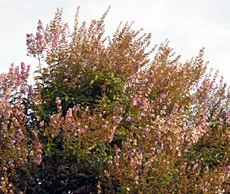 Normally, the leaves of the tree grow alternating each other and sometimes in nearly making a pair. They also grow in all the directions of the branches. They are bright green in colour and a little pale below. Being heavily veined on the underside, each leaf is a smooth and pointed oval that measures from 12.5 to 20 cm in length and grows from a short stalk. Sometimes, they turn an eye-catching coppery shade just before they fall down in the Winter. They also give the tree a temporary charm provided the insects don`t disfigure them.
Normally, the leaves of the tree grow alternating each other and sometimes in nearly making a pair. They also grow in all the directions of the branches. They are bright green in colour and a little pale below. Being heavily veined on the underside, each leaf is a smooth and pointed oval that measures from 12.5 to 20 cm in length and grows from a short stalk. Sometimes, they turn an eye-catching coppery shade just before they fall down in the Winter. They also give the tree a temporary charm provided the insects don`t disfigure them.







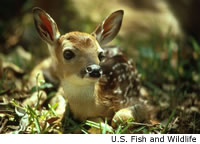
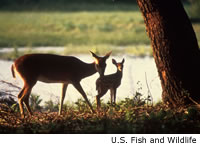
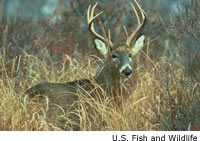
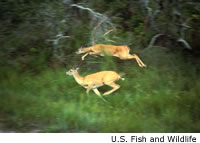
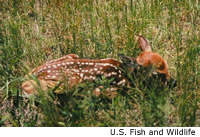

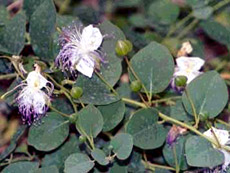 Commercial European capers are the pickled flower buds of the plant. They have an acrid, burning taste, and are considered useful in scurvy. In India, the buds and also the fruits, are similarly taken.
Commercial European capers are the pickled flower buds of the plant. They have an acrid, burning taste, and are considered useful in scurvy. In India, the buds and also the fruits, are similarly taken.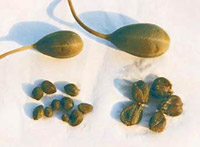 Caper seeds yield 34 to 36% of a pale yellow oil. Its Iodine value reported to be 115 to 125. It is basically a unsaturated oil, with fatty acid composition as given below:
Caper seeds yield 34 to 36% of a pale yellow oil. Its Iodine value reported to be 115 to 125. It is basically a unsaturated oil, with fatty acid composition as given below: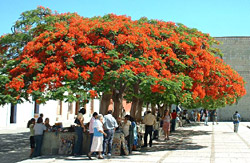 The Gul Mohr is amongst those rare trees in India that are extra-ordinarily striking and ornamental. When the month of April comes, everyone just wonder about thinking how a bare, skinny tree that is standing on a dry and hard earth can create such a glorious wealth of bloom. Just a few days after the first blossom appears, the whole tree starts shining with various splashes of crimson and orange. In the Month of May, the soft, whitish, rich green of the new plants spread out and the tree develops a light and soft beauty. The long ugly, black pods and bare, gray branches stays hidden and the spreading sunshade of green lace and cherry blossoms get the loveliest beauty. There is always a rich variety in the shades of crimson and cherry. Some trees become almost orange and some other take a deep red shade. All the variety of colour has their respective admirers.
The Gul Mohr is amongst those rare trees in India that are extra-ordinarily striking and ornamental. When the month of April comes, everyone just wonder about thinking how a bare, skinny tree that is standing on a dry and hard earth can create such a glorious wealth of bloom. Just a few days after the first blossom appears, the whole tree starts shining with various splashes of crimson and orange. In the Month of May, the soft, whitish, rich green of the new plants spread out and the tree develops a light and soft beauty. The long ugly, black pods and bare, gray branches stays hidden and the spreading sunshade of green lace and cherry blossoms get the loveliest beauty. There is always a rich variety in the shades of crimson and cherry. Some trees become almost orange and some other take a deep red shade. All the variety of colour has their respective admirers. The usual size of the Gul Mohr flower is 12.5 cm across. The large ones put up with numerous, combination of blooms and roundish drowsy buds. The design of the flower is somewhat uncommon. Five thick crimson sepals curve back and display their lime-green lining and bright yellow rims from the spaces between them. If you spread out the five spoon-shaped, curvy and crinkle-edged petals you will find one of them is larger. Its-white or yellow center splashes with scarlet. Ten long stamens spread and curve from the center. After the fall of the flowers the soft, green pods make their appearance. But soon they become hard and black, they are the long ugly straps hanging amongst the leaves. They wait there throughout the year for the next year`s flowers to appear. These leaves are just like those of several other trees.
The usual size of the Gul Mohr flower is 12.5 cm across. The large ones put up with numerous, combination of blooms and roundish drowsy buds. The design of the flower is somewhat uncommon. Five thick crimson sepals curve back and display their lime-green lining and bright yellow rims from the spaces between them. If you spread out the five spoon-shaped, curvy and crinkle-edged petals you will find one of them is larger. Its-white or yellow center splashes with scarlet. Ten long stamens spread and curve from the center. After the fall of the flowers the soft, green pods make their appearance. But soon they become hard and black, they are the long ugly straps hanging amongst the leaves. They wait there throughout the year for the next year`s flowers to appear. These leaves are just like those of several other trees. Another very interesting thing about Gul Mohr is that one can very easily recognize it even when there is no flower in it. Because of its smooth, gray limbs and the characteristic formation of outward spreading branches and leaves, it becomes easily recognizable. Gul Mohrs are some excellent light-shade trees that can grow up to about 12m. People normally plant them in such avenues where most of the trees are of same height and there they form a superb landscape. The advantage of the trees is that they grow readily from seed, although they often take a long time to germinate. As a garden tree it has some disadvantages as well. That are the limbs of these trees break easily in strong winds and that grass and other plants do not grow well beneath it.
Another very interesting thing about Gul Mohr is that one can very easily recognize it even when there is no flower in it. Because of its smooth, gray limbs and the characteristic formation of outward spreading branches and leaves, it becomes easily recognizable. Gul Mohrs are some excellent light-shade trees that can grow up to about 12m. People normally plant them in such avenues where most of the trees are of same height and there they form a superb landscape. The advantage of the trees is that they grow readily from seed, although they often take a long time to germinate. As a garden tree it has some disadvantages as well. That are the limbs of these trees break easily in strong winds and that grass and other plants do not grow well beneath it.



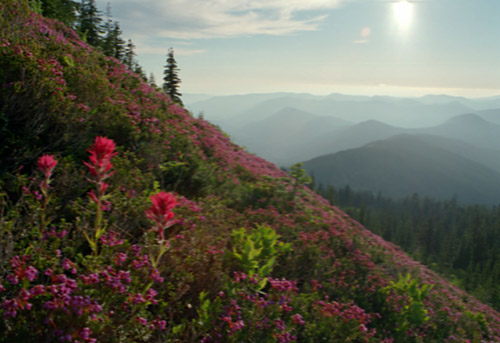





.jpg)
.jpg)


